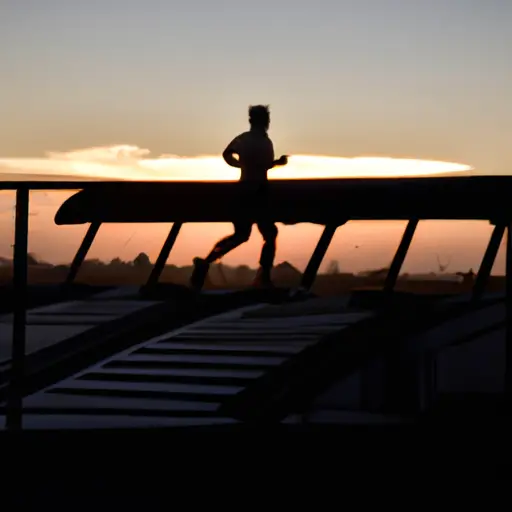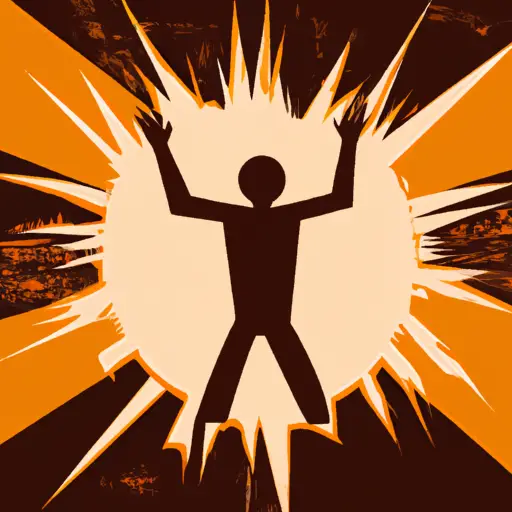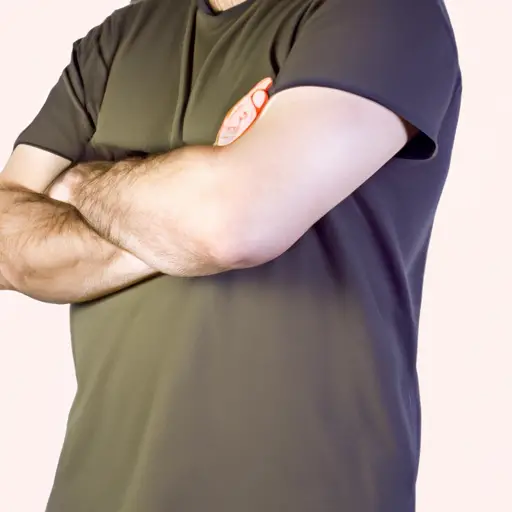The Benefits of Exercise
If you’re looking to get fit and live a healthier lifestyle, exercise is a no-brainer. Regular physical activity can help you look better, feel better, reduce stress and decrease your risk for disease.
From boosting your energy levels to improving your mood, the benefits of exercise are vast. You don’t have to be an elite athlete or professional bodybuilder to reap the rewards—even just 15 minutes of movement a day can make a difference in the long run.
Exercise helps improve mental health by releasing endorphins that give you a sense of satisfaction and joy, plus it strengthens bones and muscles, increases flexibility, boosts energy, and helps with weight loss. Cardio workouts also help keep your heart healthy and strong, while strength-training builds lean muscle mass, keeps your bones strong and aids in balance and coordination.
If you’re more the type who likes to have fun while working out, there are plenty of exciting options like Zumba and HIIT workouts. Plus, getting outside to enjoy nature and fresh air can do wonders for your overall well-being.

So whatever your age, fitness level or health history, there are plenty of rewards waiting for you once you start exercising. So why wait? Get moving today!
Factors to Consider When Choosing an Exercise
When it comes to picking the right exercise routine, one size doesn’t fit all. Think about it—everyone’s different in terms of age, fitness level, and health history. To get the most out of your exercise regimen, take these individual factors into account.
Age: Age affects which exercises are most beneficial for you. Kids and teens have less joint and bone density than adults, so their workouts should focus on building strength and flexibility. Adults, however, may want to incorporate more high-intensity activities like running and weightlifting into their routines. Elderly populations may be better served with low-impact exercises like walking or swimming.
Fitness Level: Whether you’re a couch potato or a marathon runner, everyone has a different baseline for what constitutes an exercise challenge. As you explore new workout options, start by gauging how difficult you can comfortably push yourself. From there, gradually increase intensity as your body adapts.
Health History: Knowing your medical background can help you make safe choices when it comes to exercising. If you have any chronic conditions, find treatments that suit your needs while also encouraging movement. Always check with your doctor first before taking part in any strenuous activity.
Types of Exercises
Struggling to find the right exercise for you? No sweat, I’m here with a breakdown of some common types of exercise and what they have to offer. The key is to mix it up and try different exercises so you consistently challenge your body.
Low-impact exercise is great for anyone who’s just getting started or wants to minimize stress on their joints, like swimming or cycling. But if you’re looking to step up your intensity, high-intensity interval training (HIIT) could be the way to go – it’s all about maximizing limited time with short bursts of intense effort followed by brief recovery periods.
If you’re looking to get swole, strength training is the way to go. This type of training helps build and maintain muscle mass for an overall toned look. From lifts to push-ups, there are plenty of ways to work out your body and get those muscles pumping.
Don’t forget about flexibility! Stretching and yoga not only help increase flexibility and help your body flow more easily through physical activities, but can also do wonders for your mental health. So don’t be afraid to add a few minutes of stretching at the end of your routine.
Making Exercise Part of Your Routine
Hey there, it’s Bob Woodward here. Alright let’s get to it. If you’re gonna make exercise part of your life for the long haul, you gotta dig in and do more than just a couple days of jumping around. Here are my tips:
Setting Goals – Get your aim right. Think about what kinda shape you want to be in, then set realistic goals and expectations. Setting smaller objectives helps keep you motivated and they don’t have to be big – just start somewhere. This way you can celebrate little wins that’ll get you fired up.
Scheduling Time – Make the most of that hard-earned time off! Put your workouts in your calendar — literally. That way when you look at it, exercise isn’t an afterthought – it’s just part of the plan. And it also gives you something to look forward to on those days you’re not feeling it.
Finding Support – Go find yourself some homeboys and homegirls who ARE feeling it. Don’t let yourself be the only one carrying the fitness load. It might even be more fun with friends! So go network, join a group, or even just do a virtual sweat sesh with a buddy from a distance. It’ll make those pushups feel like no sweat ;).
Conclusion: Putting It All Together
Exercise doesn’t have to be a chore; it can be a great way to boost your physical and mental health, no matter your age, fitness level, or medical history. Whether you take up low-impact activities like swimming or yoga, push yourself with HIIT or strength training, or just spend some time stretching and toning, there’s something out there for everyone.
To make exercise a regular part of your life, set achievable goals and schedule in time for it each week. Put reminders around your home and recruit friends or family members to help keep you accountable – because having those folks to cheer you on makes all the difference.
So don’t wait any longer to start living your healthiest life! Get out there, find your favorite way to move, and get fit!
Exercise Selection FAQ
How do you choose your set of exercise for your fitness plan?
When it comes to crafting a fitness plan, it’s important to choose exercises that work for you and your goals. I like to start by looking at what my body needs and making sure that I’m selecting exercises that will help me meet those needs. For example, if I’m looking for a well-rounded fitness plan, I might include exercises that target my strength, agility, and endurance. That way I’m getting a mix of exercises that will address all of my needs.
I also like to prioritize exercises that are both challenging and enjoyable. After all, there’s no point in doing exercises that you don’t like or won’t push you to progress. To find these exercises, I’m always on the lookout for uncommon and expert advice. This can come from reading books, consulting industry professionals, or signing up for group exercise classes.
At the end of the day, it’s important to find a mix of exercises that are going to make you feel healthy, energized, and motivated to keep going. So I always make sure that the exercises I’m choosing are ones that I find enjoyable and will push me to my goals.
How do you determine your fitness level?
My fitness level is determined by a number of factors, including the amount of physical activity I do, the amount of calories I take in and the amount of rest I get. Taking a baseline measurement is the first step. For example, I may take my maximum heart rate and/or measure my body fat percentage in order to get a good idea where I’m at fitness-wise. From there, I need to establish reasonable goals and do my best to hit them.
I’ve learned that tracking my progress is key to staying on track. Setting up metrics to measure my progress helps me to stay motivated and gauge how successful I am at reaching my goals. I might track my daily calorie intake, or how many steps I take each day – whatever shows my progress.
Finally, surrounding myself with a supportive network of family and friends is essential. Whether it’s a workout buddy or nutrition coach, having someone to lean on and encourage me helps me stay on track. By creating a positive environment and staying determined, I have the best chance at achieving my fitness goals.
How do I know if I am in good shape for my age?
As someone with years of knowledge and experience in the field of health and fitness, I can confidently say that the best way to know if you are in good shape for your age is to take a good look at your lifestyle habits. Are you consistently getting enough exercise and eating a healthy, balanced diet? Are you getting regular check-ups with your doctor and taking steps to reduce stress? Doing all of these things can make a huge difference in how fit and healthy you feel — and look — at any age.
Your lifestyle choices can directly impact your physical health and performance. Exercise, in particular, is an important factor in improving muscular strength, flexibility, and endurance. It can also lead to an improved sense of mental and emotional wellbeing. A balanced diet is also essential for staying healthy and boosting your energy levels. Eating a variety of nutrient-rich foods, such as fresh fruits, vegetables, whole grains, and lean proteins, is a great way to get the vitamins and minerals your body needs.
Finally, regular check-ups and screenings with your doctor can help you stay on top of any existing health conditions and help you get back on the path to good health. It can also give you peace of mind to know that you are on track with your health goals. Regular tests such as blood pressure, cholesterol, and blood sugar can give you a clear picture of your overall health.
By following these simple steps, you can get an accurate assessment of how fit and healthy you are for your age.
how to choose the right exercise for your age and fitness level
As a veteran fitness enthusiast, I can tell you that choosing the right exercise for your age and fitness level is essential for safely and effectively reaching your fitness goals. It’s important to select an activity that is challenging but not overly strenuous. That said, it’s also important to make sure the workout fits your lifestyle and that you enjoy it.
When it comes to deciding on a workout that’s suited for your age and fitness level, start by assessing your fitness goals. Are you looking to lose weight, increase your strength and endurance, or just stay active? Next, take into account your current fitness level—are you just starting out or do you have some experience? Once you’ve determined your goals and current fitness level, you can decide which type of exercise you’d like to focus on, such as walking, running, resistance training, swimming, cycling, etc.
From there, you’ll want to consider your lifestyle. Are you pressed for time? Is there an activity you can do at home or do you require a gym? What works best given your location, access to equipment and schedule? You’ll also want to make sure you like what you’re doing; if you enjoy it, you’re more likely to stick with it and get the most out of it.
Finally, consult with a fitness professional, such as a personal trainer or gym coach. They can help to customize a workout plan to match your age and fitness level, helping you reach your goals safely and effectively. So go ahead, take the plunge and get ready to start achieving your fitness goals!






